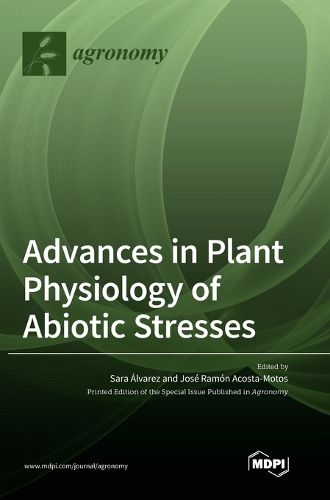Readings Newsletter
Become a Readings Member to make your shopping experience even easier.
Sign in or sign up for free!
You’re not far away from qualifying for FREE standard shipping within Australia
You’ve qualified for FREE standard shipping within Australia
The cart is loading…






This title is printed to order. This book may have been self-published. If so, we cannot guarantee the quality of the content. In the main most books will have gone through the editing process however some may not. We therefore suggest that you be aware of this before ordering this book. If in doubt check either the author or publisher’s details as we are unable to accept any returns unless they are faulty. Please contact us if you have any questions.
Plant stress could be defined as any unfavorable condition or substance that can affect or block the metabolism, growth or development of a plant. The response of the plant may vary depending on the frequency and intensity of the stressor, as well as the developmental stage of the plant.
Plants, throughout their life cycle, are exposed to a large number of conditions or stressors. Abiotic stress is stress caused by non-living agents. Depending on the nature of the causal agent, it can be divided into physical and chemical. Physical (actually, physical-chemical) stresses include water deficits, salinity (in its osmotic component), temperature extremes (heat, cold, freezing), excessive or insufficient irradiation, anaerobiosis caused by waterlogging or flooding, mechanical stress caused by wind or excessive soil compaction and stress induced by wounds or injuries. Chemical stress is caused by salinity (in its ionic or toxic component), by the lack of mineral elements and by environmental pollutants such as sulphur dioxide (SO2), nitrogen oxides (NOx), chlorofluorocarbon compounds (CFCs), ozone (O3) and metals.
The abiotic stresses that most negatively affect growth and production are probably drought, salt stress and temperature stress (high and low temperatures), all of which are associated with climate change.
$9.00 standard shipping within Australia
FREE standard shipping within Australia for orders over $100.00
Express & International shipping calculated at checkout
This title is printed to order. This book may have been self-published. If so, we cannot guarantee the quality of the content. In the main most books will have gone through the editing process however some may not. We therefore suggest that you be aware of this before ordering this book. If in doubt check either the author or publisher’s details as we are unable to accept any returns unless they are faulty. Please contact us if you have any questions.
Plant stress could be defined as any unfavorable condition or substance that can affect or block the metabolism, growth or development of a plant. The response of the plant may vary depending on the frequency and intensity of the stressor, as well as the developmental stage of the plant.
Plants, throughout their life cycle, are exposed to a large number of conditions or stressors. Abiotic stress is stress caused by non-living agents. Depending on the nature of the causal agent, it can be divided into physical and chemical. Physical (actually, physical-chemical) stresses include water deficits, salinity (in its osmotic component), temperature extremes (heat, cold, freezing), excessive or insufficient irradiation, anaerobiosis caused by waterlogging or flooding, mechanical stress caused by wind or excessive soil compaction and stress induced by wounds or injuries. Chemical stress is caused by salinity (in its ionic or toxic component), by the lack of mineral elements and by environmental pollutants such as sulphur dioxide (SO2), nitrogen oxides (NOx), chlorofluorocarbon compounds (CFCs), ozone (O3) and metals.
The abiotic stresses that most negatively affect growth and production are probably drought, salt stress and temperature stress (high and low temperatures), all of which are associated with climate change.